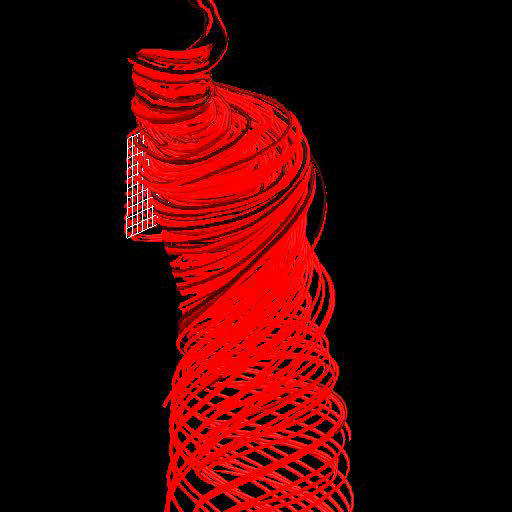| Geometric Flow Visualization Techniques for CFD Simulation Data |

|
Visualization of CFD simulation data on unstructured, three-dimensional grids poses several challenges. The wide range of realworld data set sizes and the geometric versatility within individual, CFD simulation models present challenges to the engineers analyzing simulation results. Users also face perceptual problems such as occlusion, visual complexity, lack of directional cues, and lack of depth cues. We present a collection of geometric flow visualization techniques that address these challenges including oriented streamlines, streamlets, and a streamrunner tool. Two novel approaches are included: a real-time animated streamline technique and streamcomets. We place special emphasis on necessary measures required in order for geometric techniques to be applicable to real-world data sets.
Visualization of blood flow at the surface of an aneurysm using (1) streamlines, (2) oriented streamlines, (3) streamlets, and (4) streamcomets.
These animated, dashed, color-mapped streamlines visualize air flow (150 frames).
A seeding plane is being rotated by the user highlighting a vortex (100 frames).
A seeding plane is rotated in the wire frame context of a combustion chamber (200 frames).
These animated streamlines highlight a vortex (200 frames).
The streamrunner is illustrated in combination with a seeding plane (350 frames).
This is another example of a streamrunner used in conjunction with a seeding plane (350 frames).
These are small streamcomets seeded with a variable resolution seeding plane (100 frames).
At the top are streamcomets seeded with a variable resolution seeding plane. In the middle the streamlines show a vortex struction in the combustion chamber (150 frames).